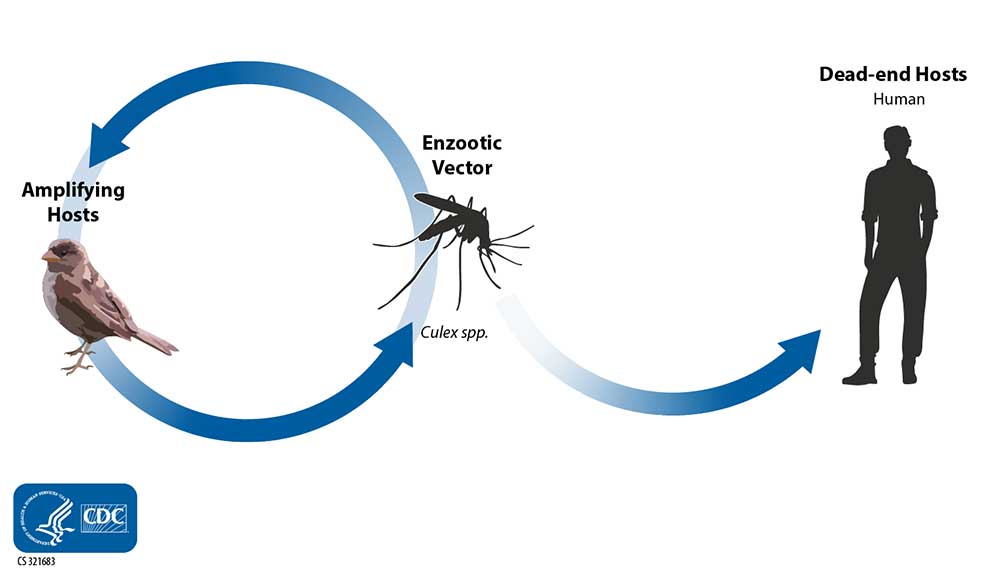Transmission
St. Louis encephalitis (SLE) virus is spread to people through the bite of an infected mosquito. Mosquitoes become infected when they feed on birds that have the virus in their blood.
Birds that live in urban-suburban areas, such as the house sparrow, pigeon, blue jay, and robin, are common SLE virus hosts. The principal vectors are Culex species mosquitoes, including Cx. pipiens and Cx. quinquefasciatus in Eastern states, Cx. nigripalpus in Florida, and Cx. tarsalis and members of the Cx. pipiens complex in Western states.
People do not develop high enough levels of the virus in their blood to infect mosquitoes. As a result, people are considered “dead-end” hosts for SLE virus. However, the levels of SLE virus in people’s blood is enough to spread the infection through blood transfusions, though this very rarely occurs.
Prevent getting sick with SLE by preventing mosquito bites.

In nature, St. Louis encephalitis virus cycles between mosquitioes (primarily Culex species) and birds. Some infected birds can develop high levels of the virus in their bloodstream and mosquitoes can become infected by biting these birds.
People become infected with the virus when mosquitoes feed on infected birds and then bite people. People are considered dead-end hosts because unlike birds, they do not develop high enough levels of virus in their bloodstream and cannot pass the virus on to other biting mosquitoes.